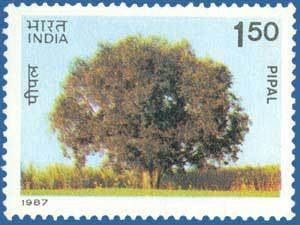I am participating in the April AtoZ Blogging challenge and my theme is Plants featured on Indian Stamps. This is my eight attempt at the AtoZ and the focus is on plants.
My theme is inspired by an online talk by Daniel L Nikrent - of Cornell University, USA held by Maharashtra Vriksha Samvardhini about Parasitic Flowering Plants featured on Stamps.
I am not a stamp collector nor a fan of stamps. Hence almost all my posts are purely based on research on the internet. I have tried to cross check the info before posting here. Please do share correct info and links to the same in case of discrepancy.
India Post has a very strong network reaching deep deep into the interiors of the country and I depended on it for news from home when we were posted in far away places. In this age of smartphones, Internet, how many of us really write letters - snail mail as they are now called? Despite this , I find that new stamps are being issued and we have stamps on diverse topics including Armed Forces, Films, Personalities, Wildlife, Handlooms, Handicrafts and so on.. It is amazing!
Ficus religiosa or Pipal is a deciduous tree belonging to the Moraceae family. It is commonly found in India growing by the roadsides or gardens and in temples. It also makes its home on pipes, walls and its roots end up damaging the structures. The heart shaped leaves are red when they first appear and gradually turn green. There are several mythological stories associated with the Peepal.
Drying Peepal leaves (by pressing them within pages of a book) to expose its veins (skeleton) is many of us would have done. The intricate primary/secondary/tertiary veins often serve as a background for painting or look wonderful by itself. I have read that leaves of Magnolia or Gardenia also reveal leaf architecture when they are dried.
 |
| Peepal leaf from from collection |
India Post released a stamp with the Pipal in 1987 of denomination of 1.50 INR
 |
| Post of India, GODL-India <https://data.gov.in/sites/default/files/Gazette_Notification_OGDL.pdf>, via Wikimedia Commons |
 |
| Post of India, GODL-India <https://data.gov.in/sites/default/files/Gazette_Notification_OGDL.pdf>, via Wikimedia Commons |
The India Postage Stamps website has a complete catalogue of stamps. Please click the link to see many many wonderful stamps.
Colnect is a comprehensive portal for Stamp collectors. It gives detailed information about every listed stamp. Click here for detailed info about Stamps - what is a stamp, types, formats, water marks, perforations and much more.
Do visit tomorrow for some more beautiful plants on stamps.Till then, Take Care and Stay Happy!
8 comments:
Never knew postal stamps had images of so many plants, flowers, leaves...how bful!
I only know Banyan tree Ficus Bengahlensis ( hope am write)
Couple of days back i saw a peepal leaves art - a painting and thot must get it...lovely post as always
Dropping by from a to z http://afshan-shaik.blogspot.com/
It's impressive to see all this botanical artwork on such a small format as a postage stamp.
Nice the stamp shows the tree and a close-up of the flowering part. Interesting tree.
Yes, that is the correct name @ Afshan ! 👍👍 Thanks for your encouragement! 🙏🏻
@Liam yes indeed! Thanks for stopping by. 😌
@Lisa i think the artists must be studying the trees in detail before 'drawing' them. Thanks!
Thank you for bringing such rare stamps on blog, appreciate your efforts and thanks for sharing.
Thank you so much @Angela!
Post a Comment